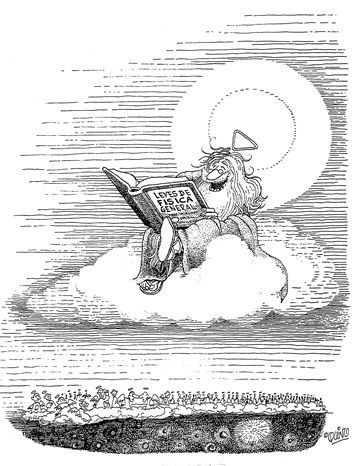The wealth of new technologies (Big Data, IA, robotics, nanotechnology, nanotubes, nanofibres, biotechnology, quantum computing, etc.) currently undergoing exponential growth must force us to seriously consider how we humans wish to live with the knowledge, technology and possibilities – both good and bad – that come along with it.
TOWARDS A NON-RELIGIOUS SPIRITUALITY

Here we leave you the index of the book by Marià Corbí Towards a non-religious spirituality. You can purchase the book either at our center or at the following Amazon link
Synopsis
We are facing one of the most profound periods of change in human history. This mutation is forcing us to be aware that we have to construct our systems and ways of life for ourselves, while rapid and frequent changes occur in our societies of continuous innovation.
To be able to guide our future, we must investigate what is happening, as well as the consequences arising – in all fields of our life – from the economic, social, cultural and religious events that are taking place before our eyes. We have to study what is occurring in our societies in order to calibrate what is happening to the language of the religious traditions of the past and their age-old legacy. Attributing the crisis in religion to the breakdown of culture is one way of evading the serious problem. The cause of this situation has been the general evolution of culture and its consequences.
Within this evolution, we must take the noblest part of the inheritance and continue forward. Where we have arrived is in fact a great gift to humanity, not a calamity; we have arrived at a spirituality without ambiguities, because it no longer has to programme groups. It is free, not subject to fixed tables of beliefs, and without exclusive and excluding orthodoxies. We have arrived at a creative spiritualty, heir to the richness and diverse spiritual tradition of all humanity. Thus, what emerges is that the new way to cultivate spirituality is an inestimable gift and a need, given the new cultural conditions, which are so in need of quality.
CONTENTS
Foreword………………………………………………………………………………………………………. 11
Introduction The Crossroads: A Bird’s Eye View……………………………………………. 15
PART ONE. CULTURAL MODELS FOR HUMAN SURVIVAL
CHAPTER I. Culture, A Biological Invention
The Fundamental Condition of our Species: As Cultural Beings…………………… 25
The Movement from a Binary Structure of Life to a Ternary Structure. The Dual Experience of Reality……………………………………….. 27
Our Specific Quality………………………………………………………………………………………. 29
The Construction of a Viable ‘Human Nature’……………………………………………… 31
CHAPTER II. Cultural Structure in Pre-industrial Societies The Method Used to Analyse the Structure of Mythical Systems…………………… 35
The Structure of Hunter/Gatherer Cultures……………………………………………………. 37
The Structure of Cultures in Horticultural Societies………………………………………. 45
In Maya-Quiché Mythology…………………………………………………………….. 46
In Desana Mythology………………………………………………………………………. 48
In the Mythology of the Marind-Anim……………………………………………. 50
In Wemale Myths and Rites…………………………………………………………….. 51
In Aztec Mythology…………………………………………………………………………. 55
In Inca Mythology…………………………………………………………………………… 60
In Kanaka Rituals…………………………………………………………………………… 61
The Structure of Cultures in Irrigation Farming Societies……………………………… 62
General Considerations…………………………………………………………………… 62
In Egyptian Mythology……………………………………………………………………. 70
In Mesopotamian Mythology………………………………………………………….. 76
In Maya-Quiché Mythology: the Popol Vuh……………………………………. 98
The Structure of Mythology in Livestock Farming Cultures………………………… 114
In the Mythology of Israel……………………………………………………………… 117
In the Mythology of Islam……………………………………………………………… 118
In Iranian Mythology…………………………………………………………………….. 119
In Christian Mythology………………………………………………………………….. 123
General Considerations on Mythical Epistemology…………………………………….. 124
The Anthropological Nucleus that Generates Religions………………………………. 136
CHAPTER III. Towards Innovation Societies
The Slow Generation of an Alternative Model to Myth and its Epistemology for the Interpretation of Reality…………………………………. 141
The Appearance of the First Industrial Societies and the Consequences………. 153
The Appearance and Introduction of Innovation Societies………………………….. 157
Static Societies and Dynamic Societies…………………………………………………………. 161
The End of Religions……………………………………………………………………………………. 165
PART TWO. SPECIFIC HUMAN QUALITY AND ITS CULTIVATION
CHAPTER IV. The Impact of the New Cultural Structure on Traditional Forms of Religion
The Disconcertion of Religious Organisations……………………………………………. 175
Myths and Symbols as Systems of Beliefs and their PurelySymbolic Reading………………………………………………………………………………………… 179
Spirituality without Beliefs; Faith without Beliefs………………………………………… 181
The Failure of the Spiritual Traditions and NewSocieties to Meet is Rooted in Epistemology……………………………………………….. 186
The Difference between Beliefs and Assumptions………………………………………. 190
Symbols and Myths: Apophatic Affirmations or Metaphorsabout the Absolute………………………………………………………………………………………. 191
No Substitutes for Religion can be Expected………………………………………………. 197
The Nature of How we Speak of the Absolute Dimension of Reality…………….. 199
The Great Masters of the Spirit are Uninterpretable……………………………………. 206
CHAPTER V. The Dual Experience of the Real
The Dual Experience of what is Real in Religion…………………………………………. 212
The Dual Experience of what is Real outside Religion…………………………………. 215
The Explicit Cultivation of our Specific Quality is a Group nd Individual Need…………………………………………………………………………………….. 216
The Notion of ‘Revelation’ in the New Cultural Circumstances…………………… 218
What the Holy Scriptures Speak About……………………………………………………….. 221
What the Spiritual Masters Say…………………………………………………………………….. 226
What can the Age-old Religious Traditions of Humanity Offer the New Industrial Societies?……………………………………………………………………….. 231
The Subtle Offer of Traditions……………………………………………………………………. 234
The Offer of Religious Traditions as an Offer of Humility, Nakedness and Love……………………………………………………………………………………. 235
CHAPTER VI. Silent Knowledge
The Path to which the Traditions Invite us is a Path of Subtlety…………………… 239
The Way to Spirituality is Inner Silence. Its Fruit is Silent Knowledge…………… 242
Silent Knowledge is the Root of Unconditional Love for all Beings…………….. 245
Symbols and Myths Speak to Us of this Reality, not of Any Other…………………. 246
The Great Ways to Silence…………………………………………………………………………….. 248
The Spiritual Path is an Enquiry and a Free and Joyful Creation………………….. 251
Silent Knowledge does not Subjugate or Exclude Doubt because it is not a Formulation………………………………………………………………………………….. 254
Silent Knowledge does not Distance from this World, but is Submerged Within it…………………………………………………………………………… 256
Truth Without Form from Silent Knowledge………………………………………………. 258
CHAPTER VII. Human Quality and its Cultivation
Silence is the Fundamental Resource of our Species……………………………………. 261
The Specifically Human Quality………………………………………………………………….. 266
The Group Urgency for Lay Silence…………………………………………………………….. 274
CONCLUSION…………………………………………………………………………………………… 276
BIBLIOGRAPHY……………………………………………………………………………………….. 279
THE AUTHOR…………………………………………………………………………………………… 283



